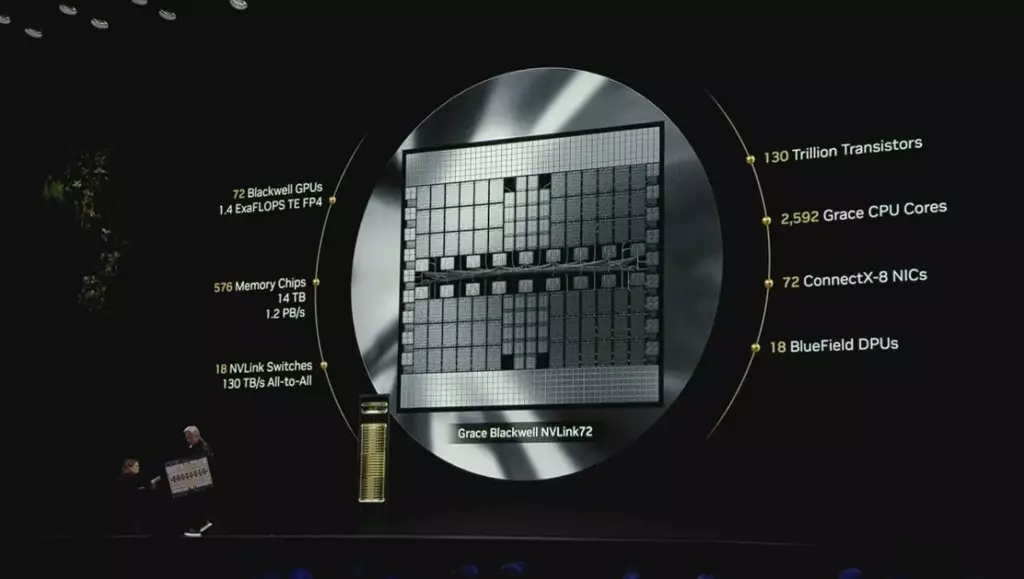In a dramatic shift that underscores the intricacies of global trade, U.S. President Donald Trump recently postponed significant tariffs on consumer electronics, a move that aims to address ongoing stock market volatility and pressure from the tech sector. As tariffs on electronic goods manufactured in China were set to reach staggering heights—including a proposed 145% on certain products—the potential impact on the American consumer could have been catastrophic. The initial fears were that an iPhone, typically priced at $1,000, could see its costs soar beyond $3,500 if produced domestically. This development highlights the dilemma policymakers face when balancing economic nationalism with market realities.
With semiconductors—the vital components that power virtually all electronic devices—now exempt from these steep tariffs, there seems to be a glimmer of hope for an industry that is crucial not only for technological innovation but also for economic stability. These exemptions perhaps signal a recognition of the potential chaos that could ensue from unpredicted moves in trade policy, fostering uncertainty and hesitation among investors and companies alike.
Stock Market Sentiments Amid Trade Turmoil
The American stock market is facing a troubling trend, plummeting around 15% since Trump’s ascension to the presidency. Despite promises of revitalizing the economy, market responses have often reflected skepticism regarding the administration’s approach to trade negotiations—an inconsistency that has spooked many investors. Late-night policy reversals further complicate the picture, making it clear that confidence in the market is fragile and contingent on the administration’s next move.
Analysts have long warned that increasing costs associated with the proposed tariffs would disproportionately affect consumers, especially in the tech sphere. Industry insiders from the Consumer Technology Association have calculated price hikes as high as 40% for game consoles and 46% for laptops. These projections have placed immense pressure on the tech manufacturing sector and have highlighted the flaws in relying solely on tariffs as a mechanism for economic growth.
The Quest for Semiconductor Sovereignty
America’s quest to regain its semiconductor manufacturing capabilities is complicated. Historically, companies like Intel dominated the chip market, benefiting from advanced manufacturing technologies and a skilled workforce. However, the rise of formidable competitors like Taiwan’s TSMC has introduced new dynamics, showcasing the broken U.S. supply chain. Simply imposing tariffs will not alone restore the lost market share or rebuild a sustainable manufacturing base overnight.
As Scott Almassy from PwC pointed out, the real repercussions of tariffs extend far beyond consumer electronics: they influence foundational materials and components, inevitably affecting the manufacturing ecosystem as a whole. The administration’s recent decisions fail to account for the intricate web of global supply chains established over decades. Hence, it’s simplistic to expect that financial incentives alone, without a comprehensive manufacturing strategy, will yield significant changes in production capacity.
The Role of Education in the Tech Ecosystem
One of the core challenges the U.S. faces is its educational system’s lag in producing a workforce skilled in math and science. As rival nations, particularly China, churn out engineers at a remarkable rate, the U.S. is left grappling with an imminent skills shortage in critical fields pertinent to tech innovations. Tech industries are at the forefront of the job market, fueling the demand for highly specialized professionals who can spearhead new advancements.
Federal and state policies must catalyze a renewed focus on education to prepare the next generation for careers in these burgeoning sectors. While Trump’s administration emphasizes the need to increase local manufacturing, it is also crucial to invest in human capital to ensure that a homegrown workforce is equipped to meet the demands of this tech-driven economy.
The Influence of the Tech Lobby
The recent pushback from the tech industry against tariffs showcases not only lobbying power but also the industry’s pivotal role in the economy. High-value jobs generated by technology firms contribute significantly to financial growth and innovation in the U.S. However, this influence raises questions regarding the balance of power between government decision-making and corporate interests. Should the need for economic autonomy come at the expense of collaboration with key industries?
The rhetoric surrounding U.S. reliance on foreign production has prompted intense discussions. Though securing investments from major corporations like Apple and Nvidia is a step in establishing a more self-sufficient tech landscape, the pathway to achieving this goal is fraught with complexities that go beyond superficial tariff changes. The assertion that tariffs alone will rectify issues of trade imbalance with China is a simplification of a multifaceted problem.
Navigating the crossroads of trade and technology requires a nuanced approach. By prioritizing long-term strategies that encompass supply chain resilience, workforce development, and equitable growth, the U.S. can position itself not merely as a participant in the global economy but as a leader in technological innovation.


Leave a Reply